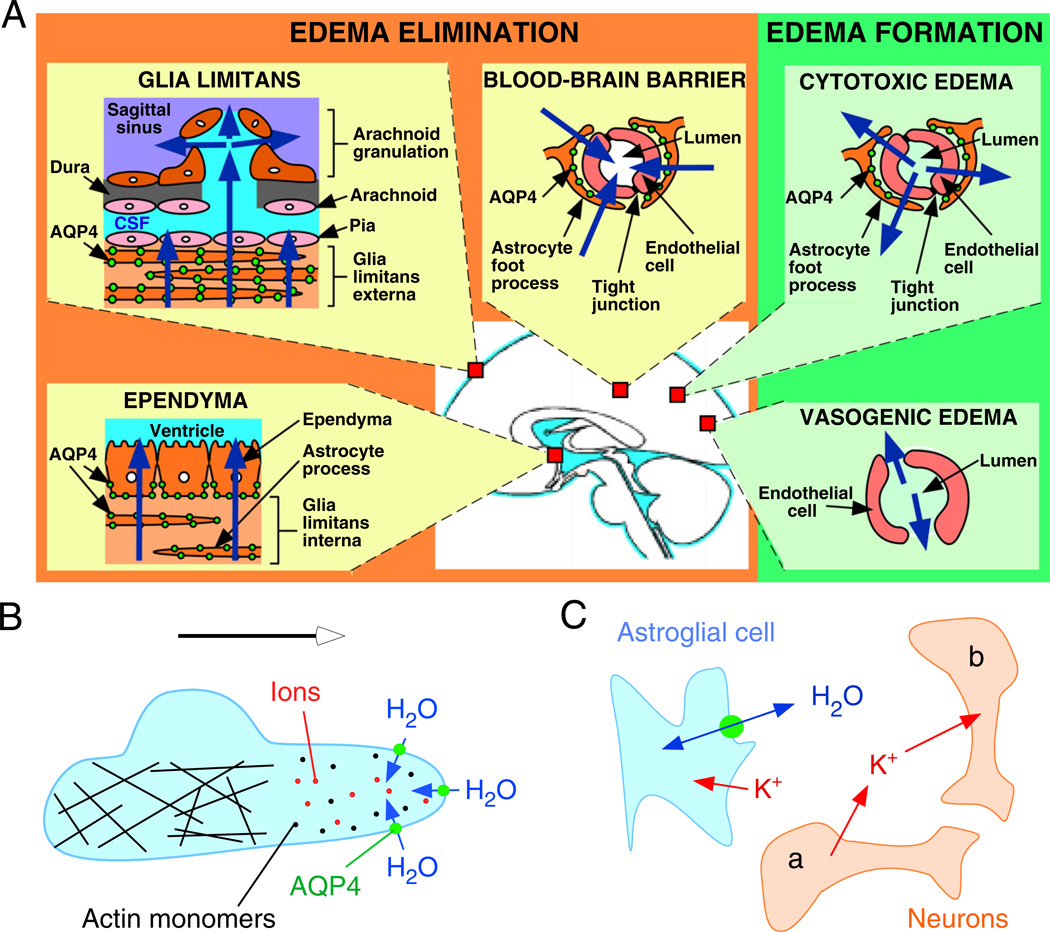Fig. 1.
Schematic depicting three distinct roles of AQP4 (green circles) in brain function: (A) brain water balance, (B) astroglial cell migration and (C) neuronal excitation. (A) Green. Routes of oedema formation in the two types of brain oedema (cytotoxic — through AQP4, vasogenic — through interendothelial spaces). Orange. Oedema fluid is eliminated by AQP4 through the glial limitans into subarachnoid CSF, through ependyma and sub-ependymal astroglia into ventricular CSF, and through astroglial pericapillary foot processes into blood. (B) AQP4 polarizes to the leading edge of migrating astroglia and accelerates cell migration. AQP4 facilitates water entry into lamellipodial protrusions in response to intracellular hyperosmolality produced by actin depolymerization and ion influx. (C) AQP4 deletion reduces neuroexcitation. Active neurons (neuron a) release K+ into the extracellular space (ECS). Increased extracellular [K+] depolarizes quiescent neurons (neuron b). AQP4 deletion increases ECS volume and reduces astroglial cell K+ reuptake. This buffers the increase in extracellular [K+] by active neuron a, preventing depolarization of quiescent neuron b. See text for further explanations. (See Color Plate 46.1 in color plate section.)

